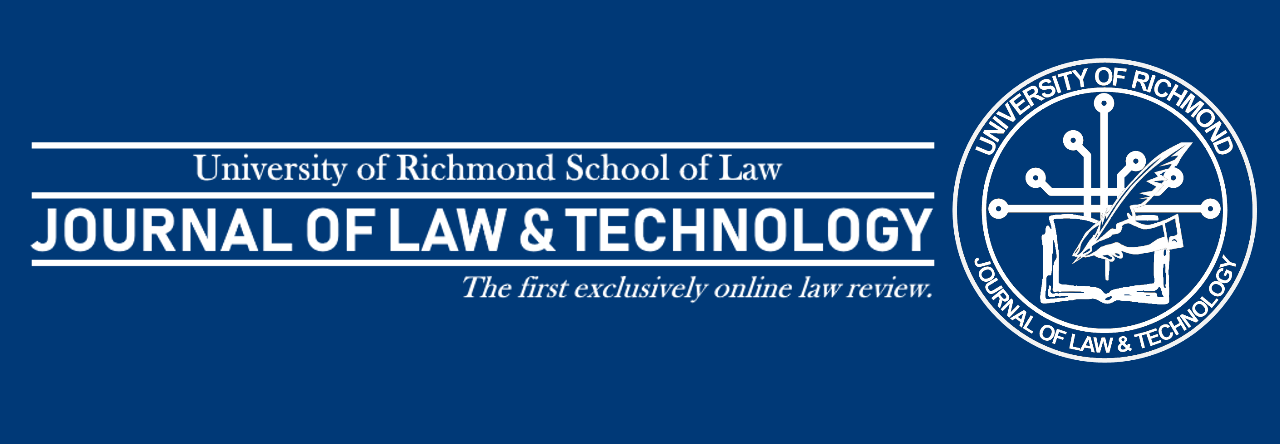By: Dylan Phillips

When someone hears of “driving under the influence,” he or she may assume that there is a clear law making it illegal for one to do what is colloquially referred to as “drunk driving.” However, what constitutes driving under the influence has become increasingly more complicated as technology continues to evolve faster than legislation can adapt. Some of these new issues that are not yet established by the law in Virginia are 1) whether motorless vehicles are within the confines of the prohibition against driving under the influence, 2) whether the public policy concerns of driving under the influence should discourage intoxicated individuals from going behind the wheel of self-driving cars, and 3) whether one can be a “driver” or “operator” of a self-driving car.
In Virginia, the State Code provides in relevant part:
It shall be unlawful for any person to drive or operate any motor vehicle, engine . . . while such person is under the influence of alcohol, . . . any narcotic drug or any other self-administered intoxicant . . . to a degree which impairs his ability to drive or operate any motor vehicle, engine or train safely, . . . while such person is under the combined influence . . . to a degree which impairs his ability to drive or operate any motor vehicle, engine or train safely. . . . For the purposes of this article, the term “motor vehicle” includes mopeds. . . .[1]
The courts have continuously made rulings, regarding what actions constitute driving under the influence, with an inability to predict how new technological trends will make the elements of the criminal act more nuanced. For example, in 2012, the Supreme Court of Virginia made a ruling in Enriquez v. Commonwealth in which it was trying to affirm the conviction of the defendant by broadly establishing that one can be driving under the influence when the key is in the on or off position in the ignition of a vehicle.[2] In Enriquez, the Court stated:
We take this opportunity to state that the statutory definition of “operator” [under Va. Code Ann. § 18.2-266] is controlling and that any individual who is in actual physical control of a vehicle is an “operator.” We hold, therefore, that . . . in discerning whether an intoxicated person seated behind the steering wheel of a motor vehicle on a public roadway with the key inserted into the ignition switch of the vehicle is in actual physical control of the vehicle, the position of the key in the ignition switch is not determinative.[3]
In Enriquez, the court attempted to clarify that there should be a broad meaning of “operator” in regards to driving under the influence, a matter that the Virginia Judiciary has been trying to establish for a significant period of time.[4] Nonetheless, the holding of Enriquez led to many nuances in the law being unaddressed because of the impacts of technological improvements being so difficult to predict.[5] One of these nuances was whether Enriquez implied that a key had to be in the ignition of a vehicle for one to be found guilty of driving under the influence, ergo, making push-to-start vehicles inapplicable to driving under the influence laws.[6] Because of this holding, three years later, a defendant challenged his driving under the influence conviction because he had a push-to-start engine in his car, thereby, permitting him to drive with his key neither being in the on or off position of the ignition.[7]
As a result of recent technology changes, a new set of related issues will likely the impact of fully-electric vehicles in regards to driving under the influence. Facially, the Statute seems to suggest that the crime only applies to vehicles with a motor or engine, a train, or a moped, however, the legislative definition of “motor vehicle” does not seem to require that the vehicle actually has a motor, only that it is self-propelled.[8] Although it is unlikely that there was congressional intent to exclude motorless, electric vehicles from the meaning of the crime, Virginia has not yet produced any binding precedent establishing that one can be charged with driving under the influence in a motorless, fully-electric vehicle.[9] Despite the electric vehicle argument going unchallenged, Lopez, did, however, uphold a driving under the influence conviction against a defendant with an electric vehicle, which may be indicative of the judiciary’s intent in considering whether certain fully-electric cars are “motor” vehicles.[10] Nevertheless, the case did not discuss whether there was an electric motor in the subject car or the impact of a motor in regards to the law.[11]
Regardless, an area of greater concern that remains unanswered in Virginia is whether one can be found liable for driving under the influence in matters concerning a fully-autonomous, self-driving car. There are at least two areas of significant concern that should be considered in this matter. First, whether the public policy concerns of driving under the influence are best addressed by applying the law towards self-driving cars. Second, whether the definition of “driver” or “operator,” regarding the driving under the influence statute, should even apply towards those making use of a self-driving car.
Although the courts have been quite broad in the application of Section 18.2-266, a question not yet considered by the courts is whether the public policy goals behind prohibiting driving under the influence are best served by the current statute because of the changing nature of technology.[12] Recently, the Supreme Court considered the general issue of driving under the influence in Mitchell v. Wisconsin, and noted in dictum that the rationale for drunk-driving laws were to address a “compelling interest” in regards to highway safety, which was “paramount,” due to the effects of irresponsible driving being “slaughter comparable to the ravages of war.”[13] The court further noted that “alcohol-related accidents took roughly 10,000 to 20,000 lives in this Nation every single year.”[14]
Technology, however, has had an impact on this concern whereby self-driving cars may have eliminated this concern. In the realm of self-driving vehicles, Tesla is currently an industry leader with around 425,000 self-driving vehicles on the road.[15] According to Tesla’s 2019 Fourth Quarter Vehicle Safety Report, which is based in-part on NHTSA data, Tesla registered only one accident for every 3.07 million miles driven in which drivers had Autopilot engaged.[16] In comparison, NHTSA’s most recent data showed that in the United States there is on average one automobile crash every 479,000 miles.[17] This statistic thereby makes Tesla’s Model S, Model X, and Model 3 vehicles with the lowest probability of injury of any vehicle ever tested by the U.S. government’s New Car Assessment Program.[18] According to the CDC, in 2016 alcohol-impaired driving crashes accounted for 28 percent of all traffic-related deaths in the United States.[19] Thus, in regards to at least the self-driving vehicles produced by Tesla, self-driving vehicles are safer in the aggregate than, not only, drivers under the influence but also, non-intoxicated drivers on the road in the United States. It can, therefore, be extrapolated that, if the goal of the law is safety in the aggregate, encouraging intoxicated drivers to drive self-driving vehicles may actually work in favor of the public policy because self-driving vehicles have fewer accidents overall than do the aggregate of all vehicles. Nonetheless, there are not any significant studies comparing all possible variations of this scenario, such as, whether Tesla owners are less likely to drink and drive as compared to the average driver, whether the permissibility of driving under the influence in a self-driving car would result in encouraging recklessness that somehow leads to more accidents from factors that are not yet being considered, or simply the number of injuries and fatalities that occur from driving under the influence in a self-driving car as compared to the number of injuries and fatalities from other specific alternative means that impaired drivers have available.
Although other jurisdictions have not given great consideration in regards to Virginia’s driving under the influence laws,[20] there was at least a single arrest in California, where the issue of driving under the influence in a self-driving car was considered.[21] In that matter, the police found a man asleep behind the wheel of a Tesla that was safely driving down the road, which pulled itself over, once the cops arrived.[22] There, the police report stated that law-enforcement was unable to determine whether the “Autopilot” feature was activated, but noted that “considering the vehicle’s ability to slow to a stop when the driver was asleep, it appeared that the “driver assist” feature may have been active at the time.”[23]
Because the driver was able to safely pull over for law-enforcement, without needing to be awake, this presents a great question of whether there are any safety concerns at issue as a result of intoxicated drivers going behind the wheel. The courts should interpret this law based on whether it is safer to be asleep in a drunken stupor, behind the wheel of a self-driving car or whether it is safer to drive in physical control of a vehicle in a state of sobriety and alertness. Because self-driving cars may be safer than other alternatives for the transportation of individuals, regardless of their mental state, the courts should possibly encourage, rather than discourage, intoxicated drivers to use self-driving cars, so that the courts may rule in conformity with the public policy goals of promoting highway safety. Moreover, encouraging drivers to be in vehicles that will always obey police commands to pull over, is also a benefit for public policy rationales. There is, however, a deficit of knowledge of what types of unintended consequences could arise because of the relatively new nature of this autonomous technology.
A second legal question that arises from this situation is whether there is even a “driver” or “operator” of a vehicle that is self-driving. Section 18.2-266 is only violated when a person drives or operates one of the defined vehicles in the Code.[24] The question in the prior instance, where the intoxicated driver was sleeping behind the wheel, presents a valid question as to whether that person was actually the one driving or operating the vehicle. If one is asleep, it is difficult to argue that he or she was not merely a passenger of the vehicle, rather than the driver or operator. Nevertheless, Virginia has continuously found consciousness to be irrelevant in regards to whether one was driving under the influence.[25]
Where this question will likely bring about future questions of law, is in the circumstances in which the driver is not physically inside of the vehicle. Tesla vehicles now have a feature called “Smart Summon,” which will fetch one’s vehicle for them.[26] Although this feature is a part of the vehicles’ Autopilot functionality, Tesla states that “You are still responsible for your car and must monitor it and its surroundings at all times and be within your line of sight because it may not detect all obstacles.”[27] In regards to driving under the influence, there remains great ambiguity as to who is at fault. By accepting the licensing agreement, is the driver accepting the responsibility of potential issues that may arise or is this an invalid agreement involving the rights of a third party? Can a driver be liable for driving under the influence, when he or she simply “summons” the vehicle in an intoxicated state, without ever being physically inside of the car? Does driving under the influence require that a person be physically present to be a driver or operator of a vehicle? These are just some of the many questions that the court will have to likely decide in the future for which there is no obvious answer.
Thus, as technology continues to progress, there are a plethora of new legal questions that will inevitably arise, which can complicate even the most well-established areas of the law.[28] Despite driving under the influence laws often being considered to have a relatively well established set of elements needed to constitute the crime,[29] technology has complicated every aspect of this law. Technology, related to vehicles, has raised questions of whether new vehicles are even within the confines of the statute, whether the public policy rationales underlying the law are still being addressed, and whether one can be a “driver,” without being inside of a vehicle. These are just some of the many new laws that the legislature and judiciary should consider as technology continues to evolve.
[1] Va. Code Ann. § 18.2-266 (2019).
[2] See Enriquez v. Commonwealth, 283 Va. 511, 516 (2012), cert. denied, 568 U.S. 942 (2012).
[3] Id. at 526 (ellipsis added).
[4] See id. at 516; see, e.g., Nicolls v. Commonwealth, 212 Va. 257, 258-59 (1971) (upholding conviction of a drunk defendant found slumped over steering wheel of a parked car, which had the motor running, high beams on, and the heater running); Nelson v. Commonwealth, 281 Va. 212, 214-15, 219 (2007) (upholding the conviction for a drunk defendant in a parked vehicle with the radio on and the ignition key in an “on or accessory position”); Rix v. Commonwealth, 282 Va. 1, 1, 3 (2011) (upholding the conviction for a drunk defendant who exchanged seats with a driver and was found behind the steering wheel with keys in the ignition and the engine running).
[5] See Enriquez, 283 Va. at 516.
[6] See id.
[7] Commonwealth v. Lopez, 90 Va. Cir. 413, 413 (Cir. Ct. 2015) (affirming a conviction of the defendant by holding that Va. Code Ann. § 18.2-266 applied to “a push-button ignition that utilizes a key fob, which requires the fob to be present in order for the ignition button to work”).
[8] “Motor vehicle means every vehicle as defined in this section that is self-propelled or designed for self-propulsion except as otherwise provided in this title. Any structure designed, used, or maintained primarily to be loaded on or affixed to a motor vehicle to provide a mobile dwelling, sleeping place, office, or commercial space shall be considered a part of a motor vehicle. Except as otherwise provided, for the purposes of this title, any device herein defined as a bicycle, electric personal assistive mobility device, electric power-assisted bicycle, motorized skateboard or scooter, or moped shall be deemed not to be a motor vehicle.” Va. Code Ann. Section 46.2-100 (2019). See generally Archer v. Fink, 57 Va. Cir. 354, 355 (Cir. Ct. 2002) (finding that motor vehicles are all self-propelled vehicles not otherwise excluded by Va. Code § 46.2-100)).
[9] It should also be noted that electric vehicles generally do have a motor. See generally Charles Morris, Engineering 101: Tesla Electric Vehicle Tech Explained, EVANNEX (Jun. 6, 2017), https://evannex.com/blogs/news/how-does-an-electric-car-work (discussing the engineering behind Tesla’s electric vehicles, and how the vehicles use a small induction motor that was invented in-part by the Producer’s namesake, Nikola Tesla). However, new companies are emerging that are producing motorless vehicles. See generally Steni Simon, A Motorless Vehicle to Reduce E‑Wast, New Indian Express (Oct. 18, 2019, 6:41 AM), https://www.newindianexpress.com/cities/thiruvananthapuram/2019/oct/18/a-motorless-vehicle-to-reduce-e-waste-2049117.html.
[10] See Lopez, 90 Va. at 413.
[11] See 90 Va. Cir. 413.
[12] See Va. Code Ann. § 18.2-266 (2019).
[13] Breithaupt v. Abram, 352 U. S. 432, 439 (1957); Perez v. Campbell, 402 U. S. 637, 657 (1971) (Blackmun, J., concurring in result in part and dissenting in part); Mitchell v. Wisconsin, 139 S. Ct. 2525, 2536 (2019).
[14] Mitchell, 139 S. Ct. at 2535-36 (citing National Highway Traffic Safety Admin. (“NHTSA”), Traffic Safety Facts 2016, p. 40 (May 2018)).
[15] See Andrew J. Hawkins, It’s Elon Musk vs. Everyone Else in the Race for Fully Driverless Cars, Verge (Apr. 24, 2019, 9:47 AM), https://www.theverge.com/2019/4/24/18512580/elon-musk-tesla-driverless-cars-lidar-simulation-waymo.
[16] See Tesla Vehicle Safety Report, Tesla (2020), https://www.tesla.com/VehicleSafetyReport.
[17] See id.
[18] See id.
[19] See Impaired Driving: Get the Facts, Center For Disease Control And Prevention (Mar. 22, 2019, 12:00 AM), https://www.cdc.gov/motorvehiclesafety/impaired_driving/impaired-drv_factsheet.html.
[20] See generally Commonwealth v. Lowe, 31 Va. App. 806, 808 (2000) (noting how other states’ drunk-driving statutes do not “substantially conform” to the Virginia Code).
[21] See Timothy B. Lee, It Took Seven Miles to Pull Over a Tesla with a Seemingly Asleep Driver: The Driver Was Arrested for Drunk Driving, arsTECHNICA (Nov. 11, 2018, 11:40 PM), https://arstechnica.com/tech-policy/2018/11/cops-pull-over-tesla-cruising-on-a-freeway-with-apparently-asleep-driver/. See generally Timothy B. Lee, Thanks Autopilot: Cops Stop Tesla Whose Driver Appears Asleep and Drunk Don’t Drink and Drive—Even If You Have Autopilot, arsTECHNICA (May. 18, 2019, 2:45 PM), https://arstechnica.com/cars/2019/05/dutch-police-pull-over-tesla-with-apparently-sleeping-drunk-driver/ (noting a similar incident in the Netherlands in which a drunk driver was safely pulled over by the police after being found sleeping at the wheel).
[22] See It Took Seven Miles to Pull Over a Tesla with a Seemingly Asleep Driver, supra note 21.
[23] Dami Lee, Police May Have Used Tesla’s Autopilot Feature to Stop Driver Asleep at the Wheel, Verge (Dec. 3, 2018, 2:46 PM), https://www.theverge.com/2018/12/3/18124017/chp-tesla-autopilot-police-redwood-city-drunk-driver.
[24] Va. Code Ann. § 18.2-266 (2019).
[25] See Enriquez v. Commonwealth, 283 Va. 511, 515 (2012) (citing Nicolls v. Commonwealth, 212 Va. 257, 258-59 (1971) (upholding conviction for driver found slumped over the steering wheel)).
[26] Aarian Marshall, Tesla’s ‘Smart Summon’ Will Fetch Your Car—Sometimes, Wired (Oct. 2, 2019), https://www.wired.com/story/teslas-smart-summon-fetch-your-car/.
[27] Support: Autopilot and Full Self-Driving Capability, Tesla (2020), https://www.tesla.com/support/autopilot (emphasis added).
[28] Virginia’s driving under the influence statute, see Va. Code Ann. § 18.2-266 (2019), has been cited over 600 times in cases over a span of more than forty years. See, e.g., Davis v. Commonwealth, 219 Va. 808, 252 S.E.2d 299 (1979).
[29] See generally id.
image source: https://insideevs.com/news/346873/video-tesla-autopilot-sees-fire-truck/



/cdn.vox-cdn.com/uploads/chorus_image/image/63935790/acastro_181114_1777_amazon_hq2_0007.0.jpg)
/cdn.vox-cdn.com/uploads/chorus_image/image/64983786/amazon_scout.0.jpg)



